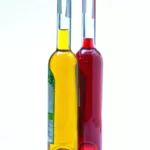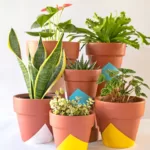What Is The Best Tomato Fertilizer?
The tomato is a beloved vegetable that has graced tables, gardens and plates for generations. Growing tomatoes isn’t always easy – they require the right kind of fertilizer to produce good yields. So what’s the best tomato fertilizer? As an experienced horticulturist, I’m here to tell you!
Let me start off by saying that there are many different kinds of fertilizers out there and it can be difficult to choose which one works best for your garden. Tomatoes need extra love in order to thrive, so finding the perfect mix of nutrients is key. In this article, I’ll discuss some tips on how to select the ideal fertilizer for your tomatoes. Additionally, I’ll provide some insight into my personal favorite brands that have worked wonders for me over the years.
Finally, I know gardening can sometimes feel daunting but trust me when I say it doesn’t have to be! With a few helpful hints from yours truly and a bit of research under your belt, you’ll soon find yourself with bushels full of succulent tomatoes just waiting to be eaten! So let’s get started – buckle up and prepare yourselves because we’re about to embark on an adventure through tomato-land!
Definition Of Tomato Fertilizer
Do you want to learn more about tomato fertilizers? Are you ready to get your tomatoes growing in no time? Understanding what tomato fertilizer is and how it works can help make sure that you are using the right type of fertilizer for your plants. Let’s take a look at the definition, meaning, and understanding of tomato fertilizer.
Tomato fertilizer refers to any material added to soil as a supplement or replacement for nutrients such as nitrogen, phosphorus, and potassium that are essential for healthy plant growth. It helps boost yield by increasing the availability of these nutrients in soil. Fertilizer also contains organic matter which improves water retention and aeration in soils and increases microbial activity. This boosts root growth, resulting in healthier plants with bigger yields.
In addition, some fertilizers provide additional benefits like disease suppression or pest control. For example, certain types contain trace elements that may reduce fungal diseases or beneficial fungi that attack insect pests. With so many options available on the market today, it can be confusing knowing which one will work best for your garden!
Types Of Tomato Fertilizers
When it comes to finding the best fertilizer for tomatoes, there are many different types available. Each type of fertilizer has its own unique benefits and drawbacks that must be considered when deciding which is right for you. From liquid fertilizers to granular fertilizers, each one can provide your tomatoes with essential nutrients in a variety of ways.
One of the most popular types of tomato fertilizer is liquid fertilizer, such as fish emulsion or seaweed extract. These fertilizers are easy to apply directly onto the soil around your plants and they release nutrients quickly into the soil. Liquid fertilizers are also great for providing an immediate boost of energy to struggling tomato plants. However, keep in mind that some liquid fertilizers may need to be reapplied every few weeks if you want consistent results throughout the season.
Granular fertilizers are another option for feeding your tomato plants. They usually contain slow-release ingredients like organic matter that slowly break down over time and provide long-term nutrition for your plant. Granular fertilizers can also be applied directly on top of the soil around your plants or worked into the soil before planting time. As with all types of fertilizer, read directions carefully before applying so that you don’t accidentally damage your plants with too much nitrogen or other nutrients.
Compost tea is a third option for supplying extra nutrition to your tomato plants during their growing season. Compost tea is made by steeping compost in water and then watering it directly onto the soil around your plants periodically throughout the season. It’s rich in beneficial microorganisms that help feed roots and promote healthy growth while also improving drainage and aeration within soils.
No matter what type of tomato fertilizer you choose, make sure to follow label instructions carefully when applying it to ensure maximum effectiveness without damaging delicate root systems underfoot. With proper use, these three types of tomato fertilizer can give even novice gardeners impressive crops year after year! Now let’s look at some of the various benefits using tomato fertilizer can bring about in terms of improved yields and healthier harvests
Benefits Of Using Tomato Fertilizer
Using a quality tomato fertilizer is essential for growing big, juicy tomatoes. The benefits of using the right type of fertilizer can be summarized in three areas: nutrient needs met, organic versus synthetic options, and application tips.
First, an important part of any successful garden is understanding your plants’ nutritional needs. Tomato plants require nitrogen, phosphorus, and potassium to reach their full potential. Fertilizers provide these nutrients quickly and efficiently allowing you to easily meet your tomato’s dietary requirements.
Second, when it comes to selecting the best form of fertilizer for your tomatoes there are two primary choices: organic or synthetic. Organic fertilizers such as composted manures offer a multitude of advantages including enhanced soil fertility and improved water retention capacity while avoiding the drawbacks associated with synthetic fertilizers like runoff pollution into nearby streams. On the other hand, synthetic fertilizers have higher concentrations of available macronutrients that often result in faster growth rates than those seen with organics. Ultimately though, which one you choose should depend on what works best for your particular situation.
Finally, proper application techniques are key when using fertilizers so as not to burn root systems or cause undue stress on young plants. For instance, applying too much at once may lead to leaching away from plant roots which will then limit absorption by the plant itself – leading to poor results overall! Therefore it’s always recommended to start off lightly and adjust accordingly depending upon how well-established your crop is already.
Tomato fertilizer offers many benefits if used correctly; however it pays dividends to understand both its strengths and weaknesses before making any decisions about which kind would work best for you!
How To Apply Tomato Fertilizer
Applying tomato fertilizer correctly is essential for producing healthy, flavorful fruits. The amount of fertilizer used, the timing of application and the selection of a suitable product all play an important role in providing your tomatoes with the necessary nutrients.
When it comes to applying tomato fertilizer, always start by following package instructions as this will help you determine how much to use. Generally speaking, you should apply 1/2 cup per plant at planting time and then every two weeks until harvest. For best results, mix the fertilizer into the soil rather than just sprinkling it onto the surface. If needed, additional applications can be made after harvesting or during periods of heavy fruiting when extra nutrition is required.
Choosing the right type of fertilizer is also key when looking to ensure robust growth from season to season. A balanced blend such as 10-10-10 (N-P-K) offers good overall nutrition for tomatoes and most other vegetables. Organic fertilizers such as composted manure are preferred by some gardeners due to their slow release properties that reduce chances of overfeeding plants and causing nutrient burn on leaf surfaces. Now let’s look at some considerations when choosing a tomato fertilizer…
Considerations When Choosing A Tomato Fertilizer
Now that you have the knowledge on how to properly apply tomato fertilizer, it’s time to focus on selecting the best one for your garden. Choosing a tomato fertilizer brand can be overwhelming and confusing given the wide variety of choices available in today’s market. While there is no single “best” choice, understanding what type of fertilizer works best with tomatoes and considering factors such as application rate, soil composition, and growth stage are key factors when making a selection.
When comparing different types of fertilizers, consider how each affects your plants differently. For example, organic or natural fertilizers may provide slower but longer-term nutrition while synthetic options might give short bursts of nutrients at once. Additionally, some brands may need more frequent applications than others depending on their formula. It is important to understand which ingredients will give you the desired results while also taking into account environmental sustainability concerns like runoff potential and leaching into groundwater sources.
To help make an informed decision about which tomato fertilizer is ideal for your garden, consult experts or read reviews from trusted sources before investing in any particular product. With this information in hand coupled with an understanding of your specific planting needs and goals, you should be well equipped to choose the perfect tomato fertilizer for your crops! From here we can move onto discussing organic versus synthetic fertilizers – which offer distinct advantages for both growers and consumers alike.
Organic Vs Synthetic Fertilizers
When it comes to the best tomato fertilizer, there is a lot of debate about whether organic or synthetic fertilizers are the way to go. Organic fertilizers come from natural sources and can be used for both short-term and long-term benefits. They provide essential nutrients like nitrogen, phosphorus, potassium, and other minerals that tomatoes need to grow. However, they don’t typically have as much concentrated nutrition as synthetics do. Synthetic fertilizers offer more nutrient density in a smaller package, so you can get more bang for your buck with these types of fertilizers. Additionally, some synthetic fertilizers contain additional micronutrients that may help support healthy plant growth.
The choice between organic and synthetic really depends on your goals and budget. If cost isn’t an issue but you want a steady supply of nutrients over time then going with organics might make sense. On the other hand if quick results are what you’re after or money is tight then opting for synthesized options could be beneficial. Ultimately it’s up to you to decide which type of fertilizer is right for your tomatoes given their individual needs and preferences! With proper care and maintenance, any kind of fertilizer will help ensure that your plants remain healthy and productive throughout the growing season.
Proper Care And Maintenance For Tomatoes
Coincidentally, tomato care and maintenance are the perfect follow-up to our discussion on organic versus synthetic fertilizers. Tomatoes require specific conditions in order to thrive and produce dense, flavorful fruits. So let’s get started!
When it comes to watering tomatoes, you should provide them with an inch of water every week during dry periods. However, if there is a lot of rain in your area, then you can reduce this amount accordingly. It’s also important to ensure that the soil drains well so as not to over-water your plants. Additionally, mulching around the tomato plant can help protect the roots from extreme temperatures while maintaining moisture levels throughout the day.
Tomato plants benefit greatly from frequent pruning which helps encourage more flowers and ultimately larger yields at harvest time. Prune by removing lower foliage and leaves that are yellow or brown in color – these will inhibit photosynthesis from occurring properly and cause reduced fruit production. Sun exposure is another key factor when it comes to tomatoes; they need plenty of direct sunlight for 6-8 hours each day for optimal growth and fruiting potential. If necessary, use shade cloths or other methods to block out any harsh afternoon sun rays if needed during hot summer months.
With proper care and maintenance, you’ll be rewarded with bushels of juicy tomatoes come harvest season!
Conclusion
In conclusion, tomato fertilizer is an essential part of maintaining a successful garden. Not only can it help to ensure that your tomatoes are getting the nutrients they need for healthy growth and development, but it can also help you achieve higher yields and tastier fruits. When selecting a fertilizer for your tomatoes, be sure to consider the type of fertilizer you’re using – organic or synthetic – as well as any additional ingredients such as micronutrients. Proper care and maintenance are key when utilizing tomato fertilizers, so have patience and don’t give up if things aren’t looking great right away! With some trial-and-error and a little TLC, I am confident you will find success in growing delicious tomatoes with lasting rewards.




